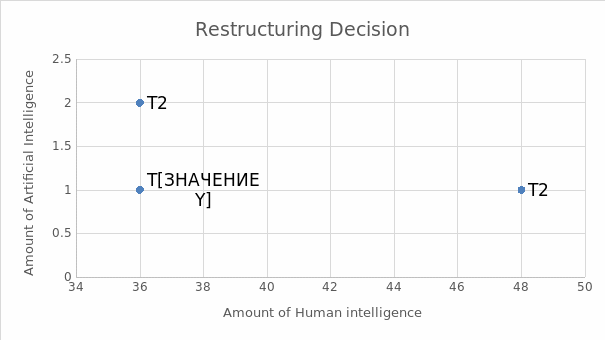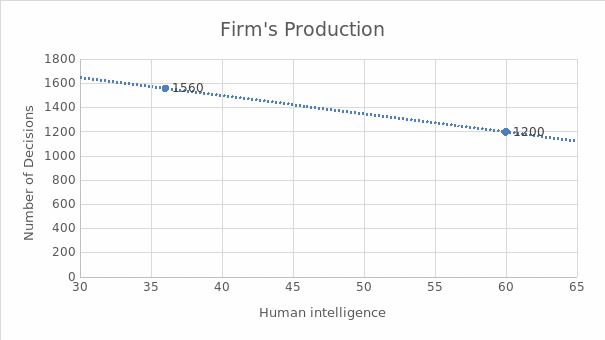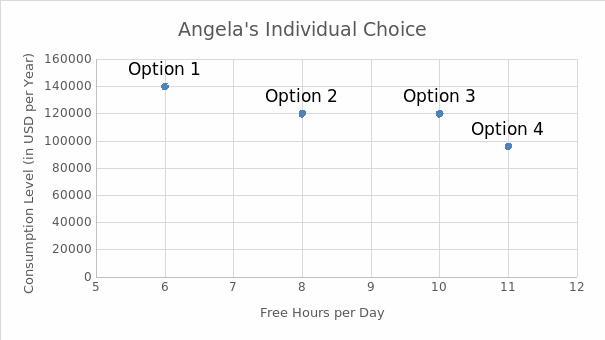Artificial intelligence (AI) is requested in the modern business world because it can lead to many positive outcomes when applied to employee monitoring. Firstly, AI can lead to a firm’s increased benefits because many technological advancements promote better working behaviors. For example, some algorithms can identify the least productive employees and dismiss them, while others deal with workplace surveillance, focusing on employees’ on and offline behavior, which motivates individuals to perform better (Cater and Heikkilä, 2021, para. 13). Secondly, the firm’s bargaining power also increases because more economic resources provide the business with more effective opportunities to defend its position.
Thirdly, the use of AI allows for promoting workers’ well-being. On the one hand, Amazon uses technological advancement to monitor employees’ movements and muscle conditions to minimize the risk of musculoskeletal injuries (Cater and Heikkilä, 2021, para. 11). On the other hand, Ford relies on AI to ensure social distancing, which is essential against the COVID-19 background (Cater and Heikkilä, 2021, para. 11). Fourthly, the use of AI can decrease the workers’ bargaining power because if an algorithm decides that an employee is not productive, this individual has few means to challenge this decision.
It is essential to consider whether the use of AI results in a Pareto improvement. This term refers to “a change that benefits at least one person without making anyone else worse off.” This definition denotes that the presence or absence of a Pareto improvement depends on various circumstances, and it is reasonable to focus on the real-world examples from the previous answer to look for this phenomenon.
Thus, the case with identifying the most and least productive employees as well as focusing on workplace surveillance does not imply a Pareto improvement. The rationale behind this statement is that such practices are discriminatory and not ethical because AI aims to dismiss people who fail to meet the stipulated goals and intrude on employees’ private lives. Furthermore, the firm’s higher bargaining power leads to employees’ weaker power, which does not either lead to a Pareto improvement. An example from the answer to Question 1 has revealed that workers do not have many opportunities to challenge discriminatory and unethical decisions by AI. However, a Pareto improvement is present when it comes to promoting employees’ well-being because both sides benefit in this case.
Deciding on fairness in economics is a challenging task because it is necessary to consider many circumstances and conditions. That is why one should focus on substantive and procedural judgments to determine whether the use of AI in employee monitoring leads to a fair outcome. On the one hand, substantive judgments of fairness are the ones “based on the characteristics of the allocation itself, not how it was determined.” This approach focuses on three criteria, including income, happiness, and freedom. It is possible to mention that AI in monitoring employees is not just and ethical because algorithms and other technological advancements provide firms with increased income while workers witness limited freedom. However, the domain of happiness can be considered fair because the use of AI can promote employees’ well-being. This statement refers to the fact that better health conditions can make people feel happier.
On the other hand, procedural judgments of fairness assess the situation from a different side. This term denotes “an evaluation of an outcome based on how the allocation came about, and not on the characteristics of the outcome itself.” Firstly, procedural fairness can be assessed by whether participants are voluntarily involved in the allocation, and this domain demonstrates that monitoring employees with AI is unjust. Secondly, the presence of equal opportunity for economic advantage allows for assessing fairness, and this sphere also indicates that the use of AI is not fair for employees. The rationale behind this statement is that workers do not gain access to increased financial benefits while the firm manages to tends its profit. Thirdly, the area of deservingness introduces some fairness because this area considers how hard individuals worked. Those who manage to follow behavior standards have access to some advantages because they are not dismissed.

The model of a firm’s technology choice stipulates that the management’s restructuring decision depends on what financial benefits a new technology will bring. For example, it is possible to imagine that Bruno’s underwriting team consists of 60 members, and the management has two AI options to implement, including Technology 1 (T1) and Technology 2 (T2). Each insurance underwriter earns $80,000 a year, denoting that the firm needs $4,800,000 to employ this team. However, Technology 1 is so effective that it can perform the functions of 24 individuals. This AI tool costs $1,000,000, and its maintaining expenses are $100,000 a year. Consequently, this technology will cost $3,980,000 (1,000,000 + $100,000 + $2,880,800 for salary for the remaining 36 employees).
Simultaneously, Technology 2 costs $800,000, but it can only replace 12 employees, meaning that the total cost for using it is $4,740,000. The use of two AI packages does not lead to fundamental improvement because it will imply the total expenses of $4,680,000 (two AI packages, double maintenance costs, and salaries of the remaining 36 employees). The diagram above represents the management’s decision because the blue isocost line represents the optimal option, and everything above it is more expensive.

It is reasonable to explain how the management’s restructuring decision above impacts the firm production. The diagram consists of two axes, and the horizontal one introduces the amount of human intelligence, while the vertical one represents the number of decisions on whether to provide insurance. Prior to any AI introduction, Bruno’s underwriting team consisted of 60 individuals who made 1,200 decisions per month. The diagram reveals that the reduced amount of human intelligence is associated with a higher number of decisions made, but it is necessary to understand that the introduction of AI has led to this outcome.
The answer to the previous question has demonstrated that the management decided to introduce an AI tool to save financial resources. However, increasing productivity is another motivational factor behind that decision. For example, McCurry (2017, para. 2) stipulates that an AI tool can increase productivity by approximately 30%. Consequently, the diagram reveals that the reduction of the workforce leads to increased productivity. However, it is necessary to understand that the implementation of the new AI technology has resulted in this outcome because fewer employees were needed, while a single tool could replace many workers and save financial resources.

When it comes to Angela and her situation, the model of individual choice can provide her with four options. Option 1 implies that Angela will have six free hours per day, which will result in an annual salary of $140,000. Option 2 will allow this data scientist to earn $120,000 a year and have eight hours of free time. Simultaneously, the same salary can be earned with having ten hours of free time if Angela moves closer to her work to reduce her drive time. Finally, eleven hours of free time can help the woman make $96,000 a year.
Since Angela significantly values her free time, she should prefer those choices that can provide her with more hours to practice music. That is why Options 3 and 4 seem the most appropriate for Angela even though Option 4 implies the lowest consumption level. Since the woman admits that these two Options mean the same preference levels for her, they have the same utility levels. Simultaneously, the other opportunities when Angela has less free time but earns more are not preferable for her because the possibility to practice music for as much as possible is a leading goal.
When it comes to coronavirus vaccination rates, a social dilemma can emerge. This term refers to the fact that some actions that individuals take to pursue their own interests result in outcomes that are not the most beneficial for others. Thus, when people do not want to get vaccinated for various reasons, society suffers because future outbreaks and various anti-COVID measures are possible. Simultaneously, a prisoner’s dilemma denotes that a dominant strategy is to postpone vaccination, and many people tend to follow it even though it leads to a lower payoff for individuals and society.
A game theory can explain why the issues above exist because this approach analyzes people’s actions regarding their motives and beliefs of what others do. For example, the public goods game demonstrates that individuals tend to refrain from some actions because they believe that free-riding will be the most beneficial strategy. Individuals think that the required vaccination rate can be achieved without their contribution because others should and will get vaccinated. Thus, a Nash equilibrium should be present because people should follow the strategies that are the best response to a situation, which refers to getting vaccinated if they do not have medical contraindications.
The social dilemma above demonstrates that society does not witness numerous benefits because individuals have some reasons that make them refrain from getting vaccinated. Thus, this dilemma can be solved by providing such people with information that will change their opinions. Firstly, some people oppose anti-COVID vaccination because they believe that these vaccines lead to harmful health outcomes. That is why it is necessary to promote better knowledge in society, and the Centers for Disease Control and Prevention (CDC) (2021, para. 5) indicates that education efforts to highlight vaccine safety are required. It is rational to ensure that all people understand how anti-COVID drugs affect their bodies.
Secondly, it is possible to impose harsher incentives to create herd immunity. This statement refers to the fact that people should get vaccinated to be employed, visit educational establishments, and travel without limitations. According to de New, Scott, and Prakash (2021, para. 25), governments are not likely to impose obligatory vaccination, but this strategy can help achieve the desired goals. If this strategy is implemented, individuals will see that avoiding vaccination will provide them with many disadvantages. Thus, they will have the specific motivation to get vaccinated, which will benefit the entire society.
Centers for Disease Control and Prevention (2021) Building confidence in COVID-19 vaccines. Web.
When it comes to assessing the solution proposed above, it is reasonable to consider how ethical it is. In this case, it is rational to focus on a consequentialist ethical framework. This approach makes decisions on whether something is ethically right or wrong depending on what consequences are obtained. In particular, when positive and beneficial outcomes are achieved, the action that has caused them is said to be ethical even though it is morally wrong by itself. For example, no one can deny that killing a person is an unethical action. However, if this person is going to murder others, killing this criminal can be considered morally right to protect other people. Thus, the consequentialist ethical framework justifies actions if they lead to positive outcomes.
The given ethical framework demonstrates that the proposed solutions above are right. On the one hand, the proposal to promote vaccination safety information is moral on its own, and no comments are necessary to justify this fact. On the other hand, imposing vaccination requirements is a more challenging option because it violates individual liberties and forces people to do what they do not want to do. However, the consequentialist theory emphasizes the fact that this decision will lead to overall benefits because mandatory vaccination will create herd immunity and lead to fewer virus outbreaks. Furthermore, this strategy will create a community with higher freedom because it will not be necessary to follow any anti-COVID measures. As a result, the consequentialist framework stipulates that obligatory vaccination is an ethically acceptable solution because it leads to more significant benefits for the entire society.
Reference List
Centers for Disease Control and Prevention (2021) Building confidence in COVID-19 vaccines.